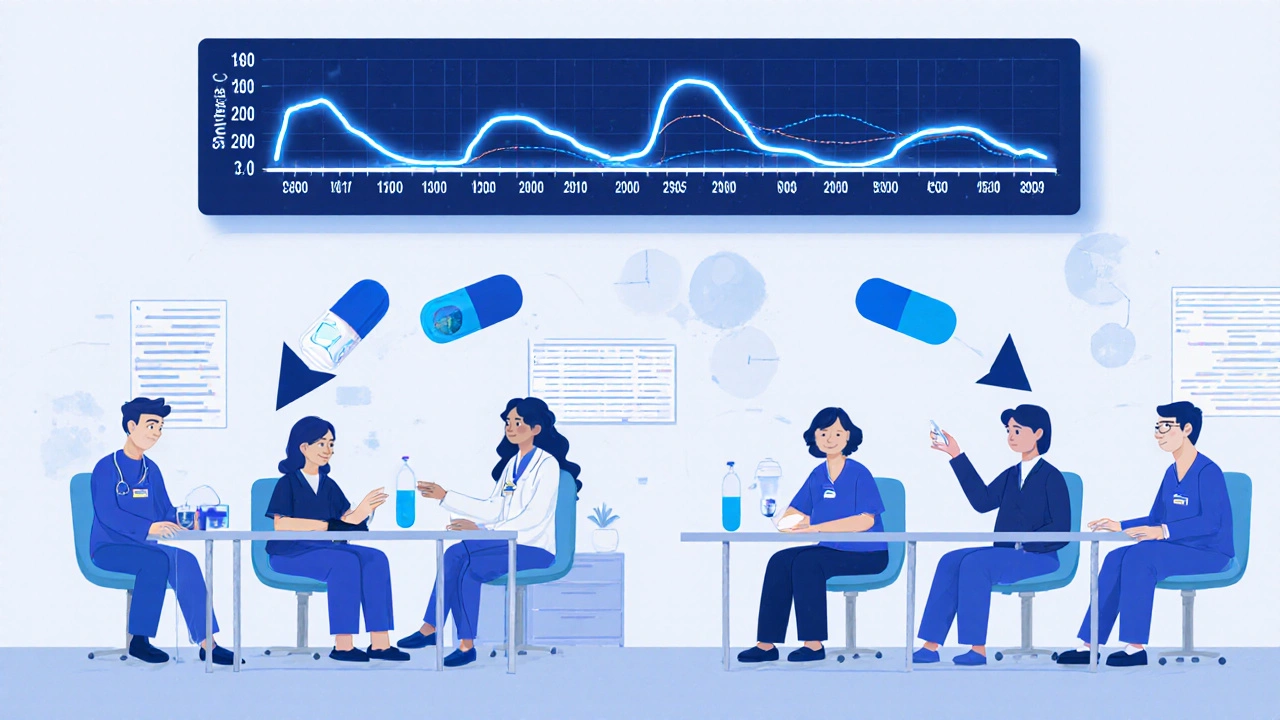When you pick up a generic pill, you’re counting on it to work just like the brand-name version. That’s where bioequivalence criteria, the set of scientific standards used to prove that two drug products have the same rate and extent of absorption in the body. Also known as therapeutic equivalence, it’s the invisible gatekeeper that keeps you safe when switching from brand to generic. Without these standards, a generic could be too weak to help—or too strong and cause harm. The FDA and other global regulators don’t just accept claims; they demand proof. And that proof comes from real human studies.
Here’s how it works: volunteers take both the brand-name drug and the generic under controlled conditions. Blood samples are taken over time to measure how much of the drug enters the bloodstream and how fast. For two drugs to be considered bioequivalent, the generic’s absorption must fall within 80% to 125% of the brand’s. That’s not a guess—it’s a strict, measurable range. If the numbers don’t match, the generic gets rejected. This isn’t just paperwork; it’s what stops a cheap substitute from failing in a patient with epilepsy, heart disease, or HIV. For drugs with a narrow therapeutic index—like warfarin, levothyroxine, or cyclosporine—this margin is even tighter. One tiny dip in absorption could mean a seizure. One spike could mean organ damage.
That’s why therapeutic drug monitoring, the practice of measuring drug levels in the blood to ensure they stay in the safe and effective range. Also known as TDM, it’s often used alongside bioequivalence criteria for high-risk medications. Even if a generic passes the initial tests, some patients need extra checks—especially if they’re on multiple drugs, have liver or kidney issues, or are elderly. And that’s exactly why posts like the one on therapeutic drug monitoring for generic NTI drugs matter. They show real-world cases where bioequivalence isn’t just a lab result—it’s a life-saving step.
It’s easy to assume all generics are the same. But bioequivalence criteria are what make them trustworthy. They’re why you can swap from brand-name lisinopril to a generic version without worrying your blood pressure will spike. They’re why a child on epilepsy meds can switch to a lower-cost pill without risking a seizure. And they’re why you can trust that a generic version of fluconazole or verapamil will do the same job as the original. These aren’t just regulatory boxes. They’re the reason millions of people get the medicine they need without paying a fortune.
Below, you’ll find real stories and comparisons that show how bioequivalence plays out in practice—from blood pressure drugs to antifungals, from Parkinson’s treatments to diuretics. Each post dives into how these standards affect real patients, what happens when they’re ignored, and how to spot when a generic might need extra attention. This isn’t theory. It’s what keeps your medicine working.

Bioequivalence studies prove generic drugs work the same as brand-name versions by measuring how quickly and how much of the drug enters the bloodstream. This step-by-step process ensures safety, effectiveness, and cost savings.